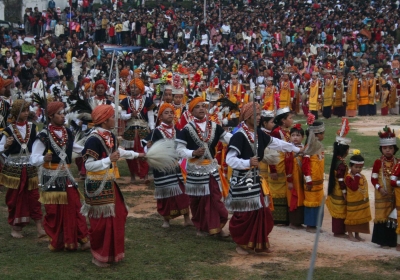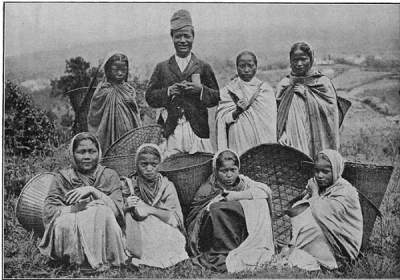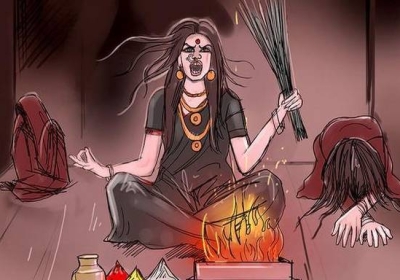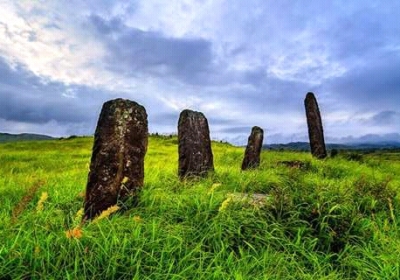Khasi Heritage: The Deity Of Creation And Folk Technology
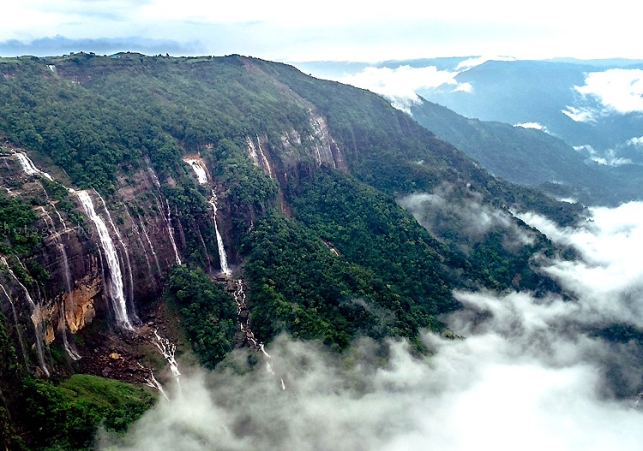
The supreme divine being witnessed the lack of proper knowledge about tools and mechanical skills of human beings despite the intelligence bestowed upon them, because of the transgression. Nevertheless, a divine being or a deity of creation and technology, Biskorom descended from heaven and emerged at Rangjyrteh. He appears in the midst of people in the jungle while they encounter several challenges in the perilous terrain, because of insufficient proficiency in facilitating their occupational engagement in society. All the implements that they have used in the past are rudimentary and raw in form, without effective utility in every aspect of the work. Biskorom asked them to fetch stone, tree logs, bamboo, reeds, creepers and all sorts of plants to make certain tools and instruments for various purposes. Some of them derive knowledge and skill for domestic requirements, others for personal convenience, and there are groups of individuals who acquire knowledge and skill for community purposes of utility, comfort and pastime. However, some of them were not capable of coping with the instructions and asked him to visit the village to provide his knowledge and skill at leisure. In this regard, Biskorom was provided with shelter and proper space for imparting the training to the inhabitants. Before anything started, the deity urged upon everybody to engage in an ethical engagement with every material and object. Stone, trees, bamboo, reed, creeper, cotton plants, trees, insects, water, fire are required for consent to utilise their resources and an essential procedure and season for acquiring and developing of tools and products must be abide in all respects. The primary objective of Biskorom is to impart the knowledge of metallurgy, because every intricate task requires an effective instrument to hone and fabricate any implements or products. Prayers were chanted before the Mother-earth to identify and locate the specific materials for the purpose. Lime and ore were extracted, ferns and herbs were plucked, trees and stone were taken for their respective utility. The masons make the foundries and the mangers, the carpenters cut and chisel the trees, farmers prepare the substance from ferns and herbs. The ore burnt in a furnace was smelted and the molten ore was casted and hammering in stone and wooden block for making an anvil, hammer, chisel, pincer and other metal implements. Thereafter, knives, machetes, shovels, shears, needles and other tools were made for various purposes. The blacksmith was the first and foremost artisan, then the goldsmith and other precious metal smiths emerged with proficiency in their respective skill. Simultaneously, the other artisans further their skill in various activities pertaining to their technique. Those who learned basketry and spinning yarn went to their respective settlements and further improved their skills through consistent practice. Those who learned masonry and pottery went to the relevant places to acquire the necessary requirements for their particular purposes. Those who learned weaponry and other instruments for social usage went to every suitable location for their application. A few of them, who were dull and incapable of learning, stayed back for further training and each and every artisan was asked to seek the permission of the respective object for making any tools or products.
Biskorom identified certain skilled artisans for iron smelting and masonry, and called them ‘Khyndai Kamar’ and Khatar Kamar’, literally meaning the nine metal-smiths and the twelve stonemasons. Folk architecture and engineering are the primary knowledge of the nine metal-smiths and twelve stonemasons handed over by the deity of creation and technology, Biskorom. Secondary knowledge systems are for craftspersons, weavers and other artisans using resources derived from Mother-earth. Human beings are glad to have learned the crafts from the deity, while a few of those who were not familiar with any of the skills, were playing with the mud and created crude human and animal forms. These people were envious of the other skilled artisans and desired to dominate the society, by being unfair in their approach to creativity. They demanded from Biskorom to animate the earthen images of humans and animals and that is how idol worship started in society. Biskorom told them that it was not in the ambit of human ability to animate the clay, but they abused him, and were arrogant and threatened him with dire consequences. When he realised that they were adamant and would not accept their incompetence, he told them that he needed to go back to heaven and seek further knowledge for that type of a task. They were apprehensive that he might not return back and sought his commitment. However, Biskorom lost track of the trail to heaven and suggested to them an alternative option of ferrying on a floating object that could carry his weight, and tied to the string to be propelled by them. He was taken to an elevated location and tied the creeper to the floating vehicle as he boarded up and flew to heaven. On reaching heaven, the supreme divine being prohibited Biskorom from any further indulgence because of their indolence and cruel behaviour. While they were waiting for his return with their aspirations to be fulfilled, the floating vehicle fell into the ground with an epitaph on the bark. However, they could not follow the inscription and were furious with Biskorom. They retaliated with a thunderous vociferation towards heaven and cursed the deity, and the instant outcome was the shower of bloodstain all over the area. This group of people, who were unable to learn any skills, were destined to labour for livelihood and toil for every bit of their ambition.
On the other hand, those who have acquired the knowledge and skills flourish in their occupation and make tremendous changes in society. Sormoh learned how to make various folk musical instruments and taught others to play the instruments and perform the songs and dances. The nine metal-smiths learned how to mine iron, copper, bronze, silver and gold, and make ornaments, implements and utensils. The twelve stonemasons learned how to extract the megalith from the boulders and erect monoliths, construct stone bridges and other community and domestic structures. Some learned how to plant mulberries and rear silkworms, how to spin yarn and weave looms for clothing. While some others learned how to plait a wide range of bamboo baskets and mats, and there are those who learned how to make clay potteries and other domestic articles. However, the most outstanding engineering feat was the folk technology of bamboo bridges and entwining the ficus roots and creepers across perilous precipices to make root bridges along the southern ravines of the Khasi land.
Leiding te la wan hiar, pdem shyngoid pajwa barhem;
U Biskorom la pyiar, la ksang kti ban phrang ha shlem.
Shoh nar khyndai kamar, ki khatar kamar thlieh maw;
Kam tbit ki Barikor, Karikor ki pnah ban thaw.
La tngen ban iaid ha khlaw, ba la suk ban trei ha bri;
La san ki matti thaw, la rasong ki pyrnon jri.
La seng ka thaiñ ka wet, ba la pliah ki shang ki kriah;
Riphin te u rimet, shken u siej ba la kyryiah.
Ka dewbyrtha basboh, la dang shkah ka dewlangni ;
Khyndew te ba la shoh, la wandur ki khiew ranei.


